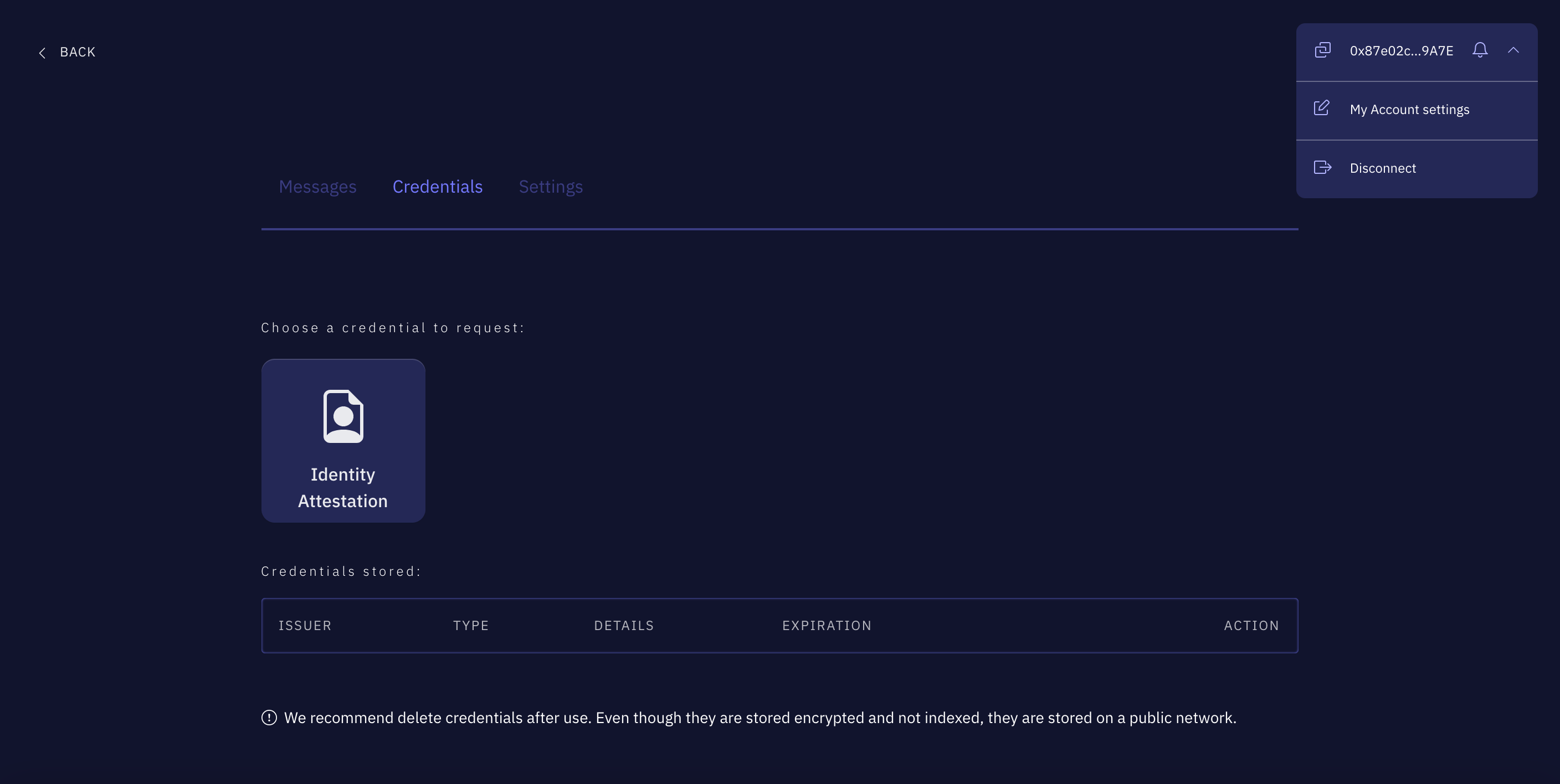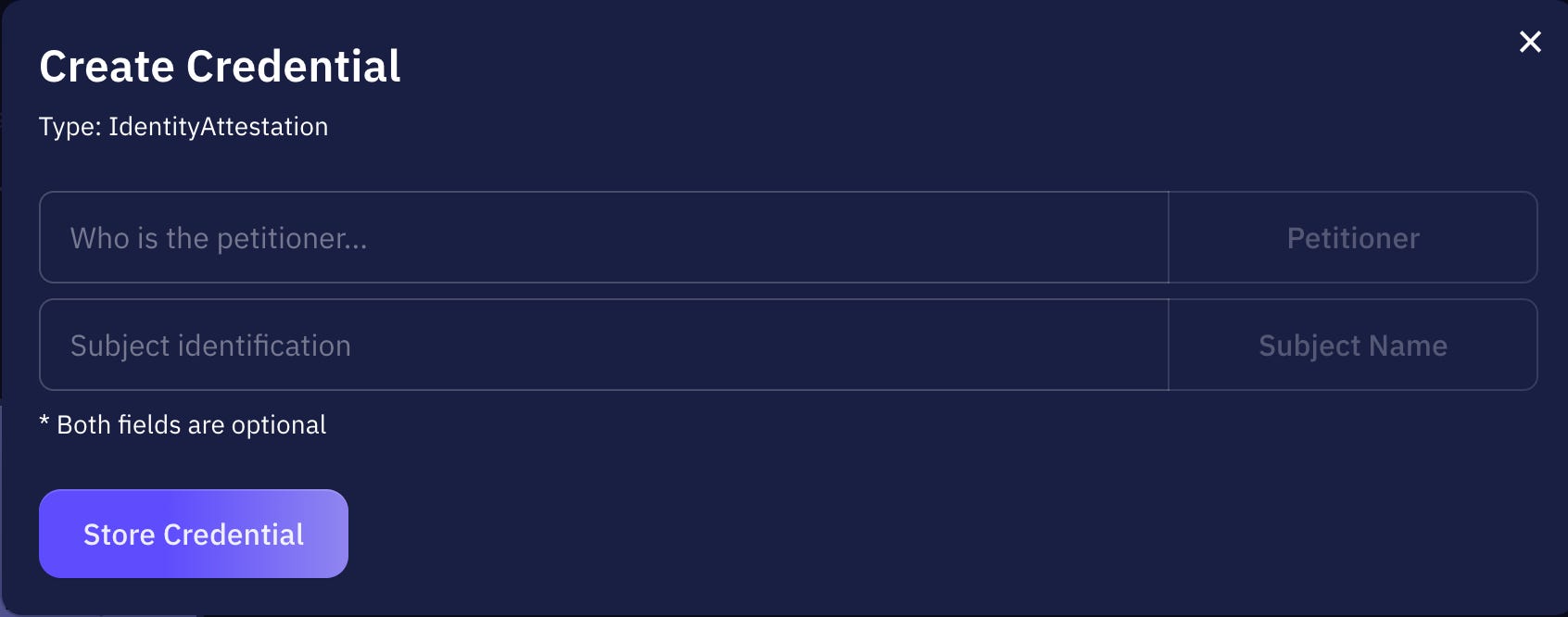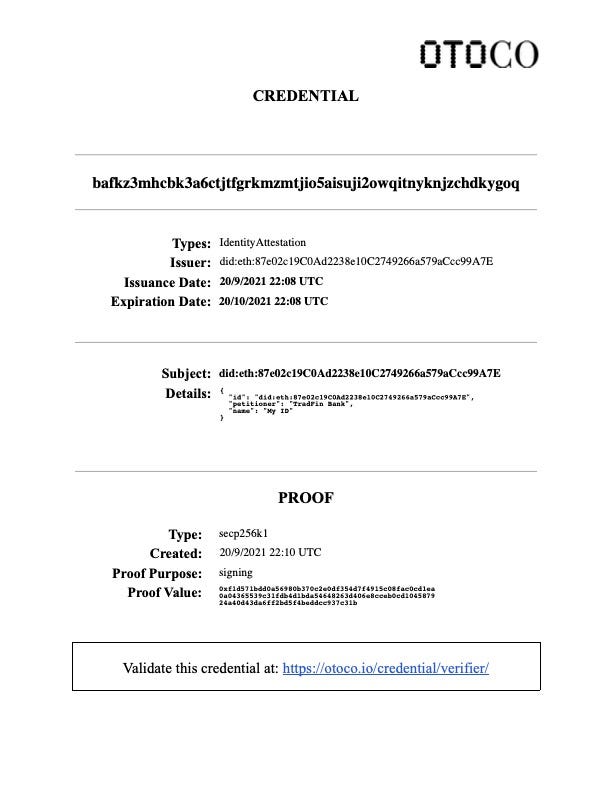Offramping from crypto is still required by many in the community who do stuff in meatspace.
Though it is relatively easy to open a bank account for an offchain LLC in the U.S., banks and other traditional financial service providers are having difficulties getting their minds round the idea that onchain LLCs spun-up on OtoCo are owned by an Ethereum wallet address…
What’s missing is an easy tool for the crypto uninitiated to verify ownership of a cryptographic wallet by a real person.
We recently added such onchain attestation tool to the OtoCo dash.
Essentially, it lets owners of an onchain LLC create a credential that undisputedly shows that they own the wallet that controls their LLC, and hence own the LLC.
Here is how it works:
Step 1: Create key pair
Go to otoco.io and connect with the wallet you used to spin up your onchain LLC. You should see a prompt like this:

Click “Authenticate” and you will see two successive signing requests via Metamask, a first one to generate a key pair and the second one to validate ownership of your public key. Sign both.
Step 2: Access account settings
Click on your wallet address top right and select "My account settings”.
The screen that follows lets you check messages, add credentials and change your account settings.

Select “Credentials” from the horizontal menu and click the Identity Attestation icon. The following modale will pop up:

You now have two optional fields:
- In the Petitioner field, you can add the name of who is requesting your attestation. Ideally, you would use this field to paste a unique code your Petitioner has sent you in advance. In our example we use TradFin Bank as the code Petitioner has asked us to use. That way, Petitioner can be sure that only the recipient of the unique code could have generated the Credential, since it will show this unique code in the Subject section of the Proof (see below).
- Second, you can also add a subject line for ease of reference, e.g. “My ID”. This may be useful if you issue multiple credentials, all of which will be securely stored on IPFS and accessible via the OtoCo dash.
Click “Store Credential”. You will be asked to sign a message on Metamask. Once signed, you will see that a credential has been issued using your public wallet address (in our example, the wallet ending in 99A7E):

Step 3: Have your credential validated
Click on the Download button and you will see a PDF similar to the one below, showing the unique identifier for the credential, what type of credential, who is the issuer, when it has been issued and when it is set to expire. For now, we set the default expiry at 1 month.
Under the heading “Proof”, you will find more details about the type, date and value of the proof created.
All you have to do now is send your Petitioner the PDF and ask them to click on the link to our public verifier site https://otoco.io/credential/verifier/

Your Petitioner can now validate the credential by uploading the PDF you sent them, which will generate the following Proof:

The result is that Petitioner now has indisputable proof that you are the owner of the wallet which controls the onchain LLC.
Next mile
Similar solutions to the above already exist and we learned from them. For instance, our tool conforms with the self-sovereign approach to identity on blockchain, and makes sure attestation is always voluntary.
However for our purpose, we had to engineer a solution that allows any Petitioner (typically, a service provider such as a bank, however this could be any third party) to verify your credential without being asked to use a cryptographic wallet or interact with blockchain technology generally, which would perhaps be expecting too much :-).
In future, our solution could be used for document certification or notarization, if and when required.
However, before we build this out further, we first want to make sure our solution ports to the onboarding requirements of the potential banking partners we started to engage with. Wish us luck!
The end state should be a company dashboard that lets users manage both crypto and fiat treasury for their projects, by giving them an API into their fiat bank account together with a way to manage their crypto holdings on blockchain.
To be continued…
If you want to contribute to our solution, just join our OtoCo community forum on Telegram today!

